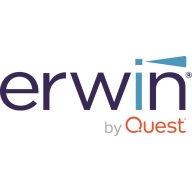

SAP Data Hub and erwin Data Catalog by Quest are competitors in the data management sector. SAP Data Hub is favored for its integration flexibility, while erwin Data Catalog stands out with its metadata management and automation, making it preferable for advanced functionalities.
Features: SAP Data Hub offers flexible data integration and processing, supporting various data formats and environments. It includes tools for effective data pipeline management. Erwin Data Catalog by Quest focuses on detailed metadata management with automation features for data discovery and classification. Its ability to provide deep insights into data lineage and usage differentiates it significantly.
Ease of Deployment and Customer Service: SAP Data Hub features a simple deployment approach, accommodating cloud and on-premise setups. It provides strong customer service with a focus on user guidance. Erwin Data Catalog by Quest also supports both deployment models and highlights ease of implementation with analytics for quick insights, offering detailed support that enhances customer satisfaction.
Pricing and ROI: SAP Data Hub presents a more affordable setup cost and quick ROI, attractive to budget-conscious businesses. Erwin Data Catalog by Quest, while requiring a larger investment, promises potentially higher ROI due to its advanced features. The choice often depends on the value placed on innovation versus budget constraints.

erwin Data Catalog (DC), part of the erwin Data Intelligence Suite, automates enterprise metadata management, including data mapping, code generation, data profiling, data lineage and impact analysis. It integrates and activates data in a single, unified catalog in accordance with business requirements by scheduling ongoing scans of metadata from the widest array of data sources, keeping metadata current with full versioning and change management, and easily mapping data elements from source to target, including data at rest and in motion, and harmonize data integration across platforms.
The SAP® Data Hub solution enables sophisticated data operations management. It gives you the capability and flexibility to connect enterprise data and Big Data and gain a deep understanding of data and information processes across sources and systems throughout the distributed landscape. The unified solution provides visibility and control into data opportunities, integrating cloud and on-premise information and driving data agility and business value. Distributed processing power enables greater speed and efficiency.
We monitor all Metadata Management reviews to prevent fraudulent reviews and keep review quality high. We do not post reviews by company employees or direct competitors. We validate each review for authenticity via cross-reference with LinkedIn, and personal follow-up with the reviewer when necessary.